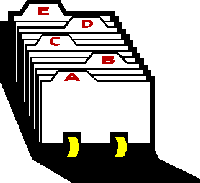Cyber-Sierra Workshop 2002: E-Mail Power
E-Mail Outreach:
| Start | Do's | Don'ts | Manage | Outreach | Spam |

E-mail is an effective outreach tool.
You can use it to inform your audience, gain support for your activities, establish credibility for your organization, and strengthen your role beyond the local level. A good example of the effectiveness of e-mail, e-newsletters and web site was the swift rise of the Klamath Basin Crisis from a local issue in a remote rural area to an issue of national concern in a matter of days.E-mail is active.
A web site is 'passive' in the sense that it waits for the visitor to click their way in. The "function" of a web site is to communicate ideas and generate action from the visitor. One of those actions should be to get the visitor to sign up for a e-newsletter. Your e-mail/newsletter extends your ability to communicate into a pro-active mode. Every future e-communication builds on those initial contacts, moving the relationship between the visitor and your district from casual to committed.Start an E-newsletter.
When first starting electronic outreach, concentrate on creating an e-mail newsletter. Once you have a fairly large group of members, a discussion list may become worthwhile. Essentially, a newsletter builds the relationship between you (or your organization/district/agency) and the members of the list. An interactive discussion list builds relationships between members.E-mail Newsletters
Who, What, When, Where, Why?
- Why should you start an e-mail newsletter in the first place and keep it going?
- E-mail is the least expensive way to keep in touch with your constiuents, supporters and working partners. An e-newsletter outreach can build support for your district projects, and operate as a neighbor-to-neighbor information sharing medium. It can convey time sensitive data very fast. It keeps the 'relationship' between the sender and the reciever active and current.

- Who is your audience?
- The e-newsletter acts as a filter. First your web site targets a specific audeince. Then your e-newsletter offers visitors a deeper connection to conservation. Know your audience.
- What do you want to tell them?
- E-newsletters are great for time sensitive information like events, references to timely technical information sources, cost-share conservation news, etc. Organizations most often use listservers to send out newsletters or standalone e-mails called an "announcement" or one-way list. But listservers can be configured as discussion lists, too. These allow for e-mail conversations between members that allow for rapid learning and a strong sense of community.
- When and how often are you going to send out the newsletter?
- To be effective in building a relationship with the subscribers, a newsletter should go out at least once a month. If staff time can be assigned to it, weekly or bi-weekly can be very useful, too. Information can be gathered from a variety of sources, and relayed to the group.
- Where will you manage the list?
- Lists can be managed from your desktop or through an application service provider(ASP). You can start by using your existing e-mail program. Once the list grows to about 50, you'll want to consider either a software program that handles bulk email, or a third party service. List management takes time, so learn more about the options before you start.
- How much time will a newsletter take to prepare?
- Creating a newsletter and distributing it takes time. You have to budget the time in, just like doing a print piece. Delivery is fast. Composition is not.
- What if there's too much news?
- Too long of a newsletter can be a problem to distribute, even by e-mail. Yoou can however, create a newspage on your web site then send out newsbriefs via e-mail directing folks to the site.
- What about back issues?
- Plan to archive the newsletters - at least on your computer. The preferred alternative would be to archive them at the web site. Thet can even be archived as plain text instead of HTML pages. But do plan an archive.
Reference Sites:
- One Northwest: Email
One Northwest is an environmental advocacy center with extensive information on writing action alerts, managing e-mail, encryption and much more. They have a wealth of useful information for electronic outreach activities.
- TechSoup.Org
TechSoup is key resource for nonprofits for planning web sites and outreach activities with tons of resources. Check under 'Using the Internet' for timely articles on using email as an advocacy tool, creating a BCC list, etc.
- List management
Desktop of ASP? Making the choices for list management is made clear through this concise article.
- Introduction to E-Mail Discussion Lists
Excellent review of discussion list basics for that next-step in communications outreach.
- Yahoo Groups
Start a group newsletter or discussion list.
- Spread the Word with Mailing Lists
Basic overview of the mechanics of running a mail list.
WORKSHOPS: | E-Mail and Outreach | Web 101 | Building Accessible Webs | Web Security |
Workshops Location: http://www.cyber-sierra.com/workshops/
2002 copyright © Cyber-Sierra.Com, on-line since 1997